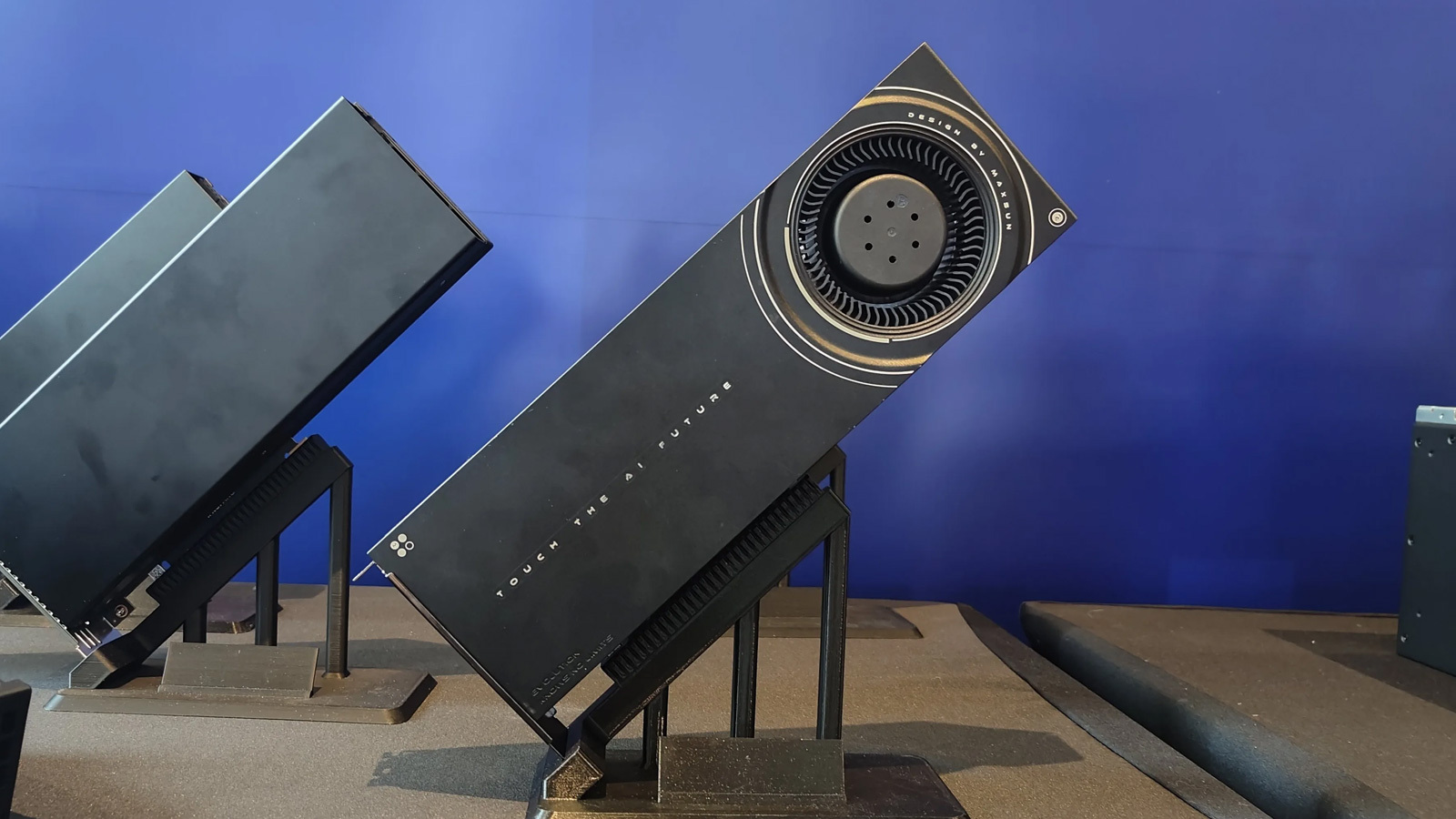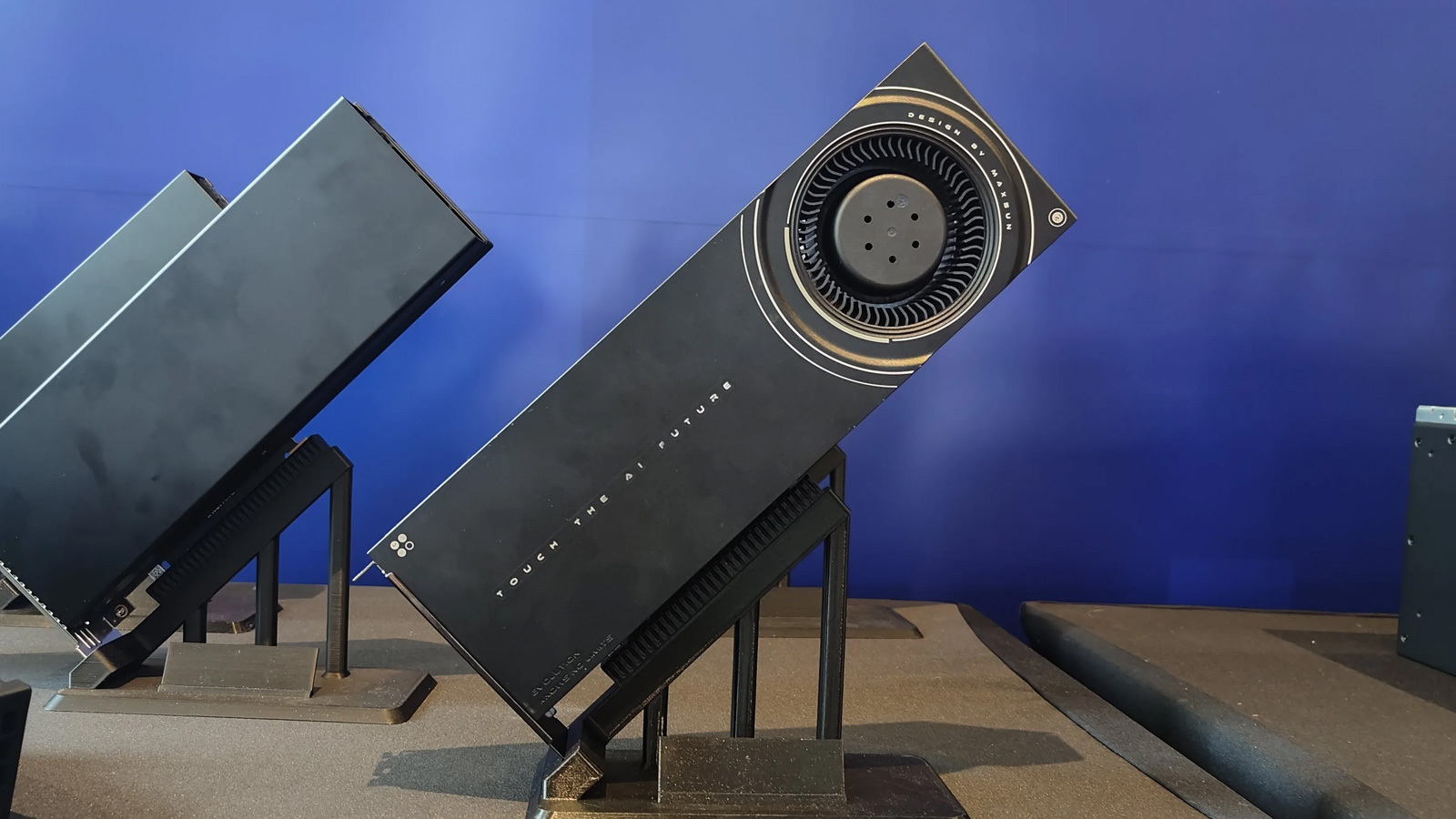

Intel showed off two new graphics cards at its Computex booth in Taiwan alongside its latest CPUs , but neither of them is for gamers. The Intel Arc Pro B50 and B60 are professionally targeted GPUs designed for AI training and inference, alongside other professional computing tasks. Although seriously underpowered compared with the Nvidia and AMD alternatives, Intel's designs are far cheaper and offer the option of multi-GPU configurations, which together could rival the more expensive alternatives from the competition.
Workstation graphics cards tend to be very expensive, so it was no surprise when Nvidia launched its latest flagship earlier this month, the RTX 6000 with 96GB VRAM and a price tag around $8,000. Intel is looking to adopt a different price and performance approach to workstation GPUs, though, selling its 24GB B60 workstation card for just $500. But put a few of these cards together, and you might get something akin to Nvidia's flagship card, but at a much lower price.
Intel is all about the big VRAM GPUs in 2025 .
The Arc Pro B60 has an overall memory bandwidth of around 450GBps, or around 1/4 that of the RTX 6000. Its INT8 performance is around 200 TOPS, as per The Register. That's about 1/5 of what the RTX 6000 can manage. But where the Nvidia card can pull as much as 600W for its grandiose performance, the B60 is more like 120W- 200W.

Intel is banking on professionals and enterprises using up to four of these new Battlemage GPUs in parallel to compete with Nvidia. That might deliver similar results to just one of the new Nvidia cards and at a quarter of the price—though with potentially higher power draw. Indeed, Intel actually pitched using as many as eight of these cards in one system, which has the potential to outstrip any single professional card out there, assuming the apps and services are able to work with such a unique configuration.
There are other tasks that the Nvidia card(s) are far better suited for, though. Where they might be 4x faster at INT8 calculations, their FP4 performance is between 10 and 20 times faster, making Intel's multi-GPU configurations all but redundant. You just cannot get 20 cards in a single system, and the power delivery for such a design would be ridiculous.
But no professional organization is quite the same as another, and where a single or dual RTX 6000 configuration might be right for one pro team, another may find Intel's designs are more to their liking.
What this does mean, unfortunately, is Intel isn't debuting any new gaming GPUs at Computex or in the immediate future. We'll probably need to wait until the Fall before it unveils its next-generation design. Rumors for that card suggest the G31 at its core would be roughly comparable to an RTX 5070. If Intel's previous GPUs are anything to go by, though, they should be far more affordable than Nvidia's latest releases.
However, what is truly exempt from this?


No comments:
Post a Comment